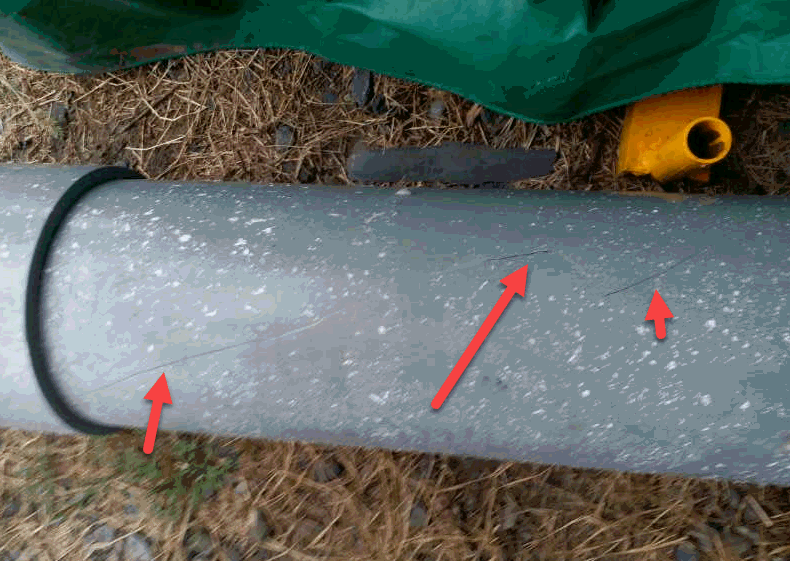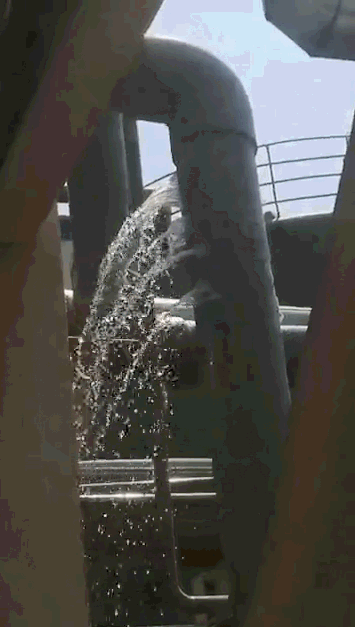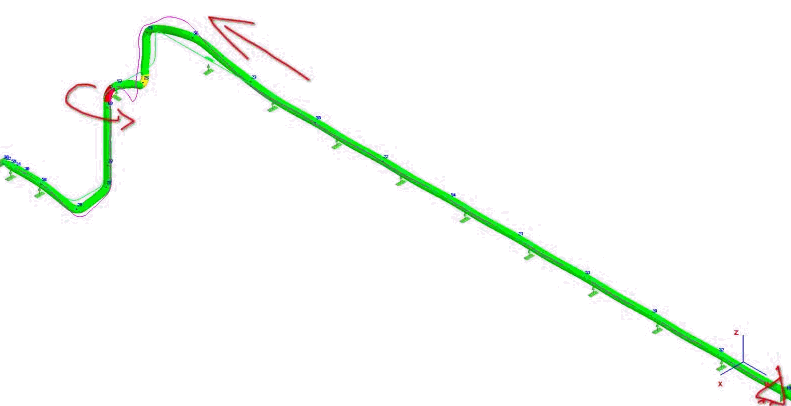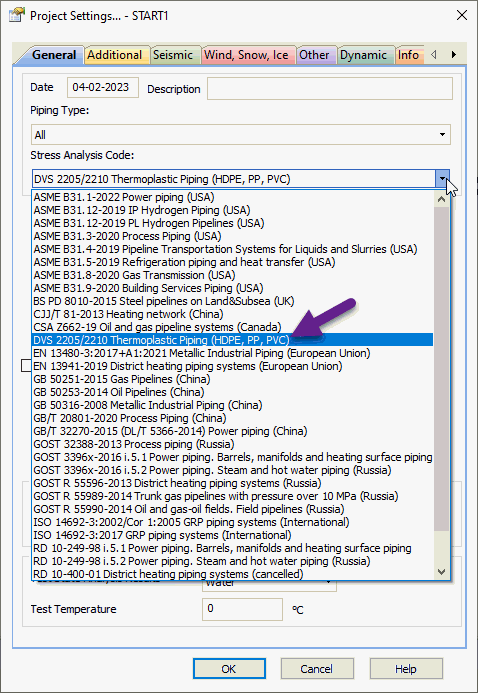

The function described in this topic should be used only for non-reinforced, stiff plastic piping.
For reinforced thermoplastic piping we recommend to use fiberglass piping code.
For flexible plastic piping we recommend to use flexible plastic piping function in START-Elements.
The main features of thermoplastic piping unlike steel piping is:
The allowable stress of
plastic piping is dependent on service life and temperature. To determine
the allowable stress used the  that depends
on temperature and service life. The A,B,G,J factors are stored in
START-PROF material
database. For details about how the stress and allowable stresses
are calculated, see Stresses
in Piping
that depends
on temperature and service life. The A,B,G,J factors are stored in
START-PROF material
database. For details about how the stress and allowable stresses
are calculated, see Stresses
in Piping
Linear thermal expansion factor for plastic piping is much higher than for steel piping, so thermal expansion e1 is much greater than in steel piping
Linear expansion from pressure load e2, caused by Bourdon effect, for plastic piping is much greater than for steel piping and must be taken into account
In some cases the swelling elongation due to chemical reaction e3 with product should be considered. Swelling strain should be specified in pipe additional properties
Unlike steel piping, the stresses are calculated using Young's modulus (creep modulus) Ecm that depends on service life and stress level. For higher service life - the lower creep modulus is used. The support loads, displacements etc. calculated at 100 minutes creep modulus Esm. The analysis for occasional loads is performed using 0.1 hour creep modulus Est
In operating condition the average creep modulus is used (average between installation and operating temperature)
Poisson's ratio is highly dependent on temperature. At high temperatures the 0.5 value often used
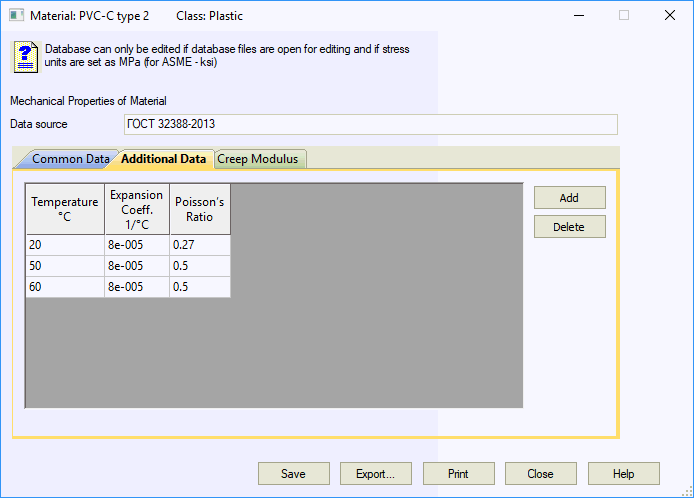
Allowable stress for plastic piping depends on chemical resistance factor, laying condition factor, safety factor and joint strength factor
The wall thickness check is performed only for straight pipes and not performed for fittings
PASS/START-PROF uses DVS 2205/2210 method for thermoplastic piping analysis.
Axial expansion of the thermoplastic pipe is:

Thermal expansion e1 is

k - Temperature range factor, taking into account the nonlinear temperature distribution across the wall thickness, from pipe additional properties, a - thermal expansion factor from material database
Pressure elongation e2 is

t - wall thickness, D - pipe outer diameter, m - Poisson's ratio at operating temperature, p - operating pressure, Ecm - average creep modulus
Swelling elongation e3 is

Creep modulus depends on the service life from Project Settings, temperature and stress value.
There are 3 types of creep modulus:

EminT - creep modulus at ambient temperature, service life, and current element stress taken from material database
EmaxT - creep modulus at operating temperature, service life, and current element stress taken from material database
Ambient temperature and service life are taken from Project Settings

E1.6minT - creep modulus at ambient temperature, service life=100 minutes=1.667 hour, and current element stress taken from material database
E1.6maxT - creep modulus at operating temperature, service life=100 minutes=1.667 hour, and current element stress taken from material database

E0.1minT - creep modulus at ambient temperature, service life=0.1 hour, and current element stress taken from material database
E0.1maxT - creep modulus at operating temperature, service life=0.1 hour, and current element stress taken from material database
The creep modulus in material database depends on service life, stress, and temperature:
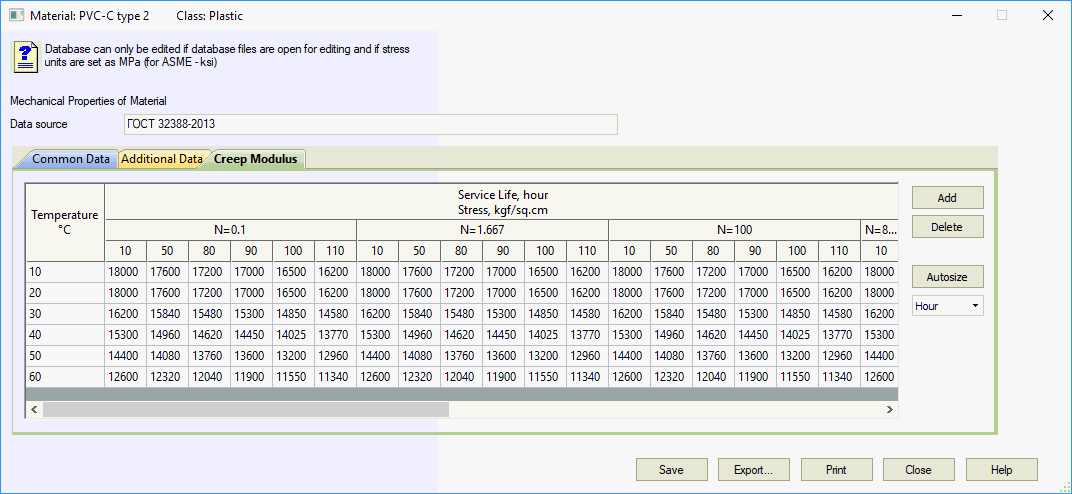

Ky - Safety factor from pipe properties,
Kc - Joint strength factor from pipe properties,
Kx - Chemical resistance factor from pipe properties,
Kp - Laying condition factor from pipe properties,
Kt=1
Kcyc=1
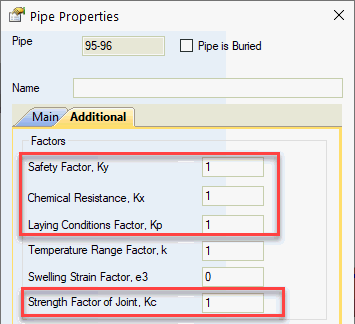
 - nominal long-term allowable
stress
- nominal long-term allowable
stress

where
A1, B1, G1, J1 - characteristic factors for left curve from material database
A2, B2, G2, J2 - characteristic factors for right curve. If only one curve used then set A2=0, B2=0, G2=0, J2=0
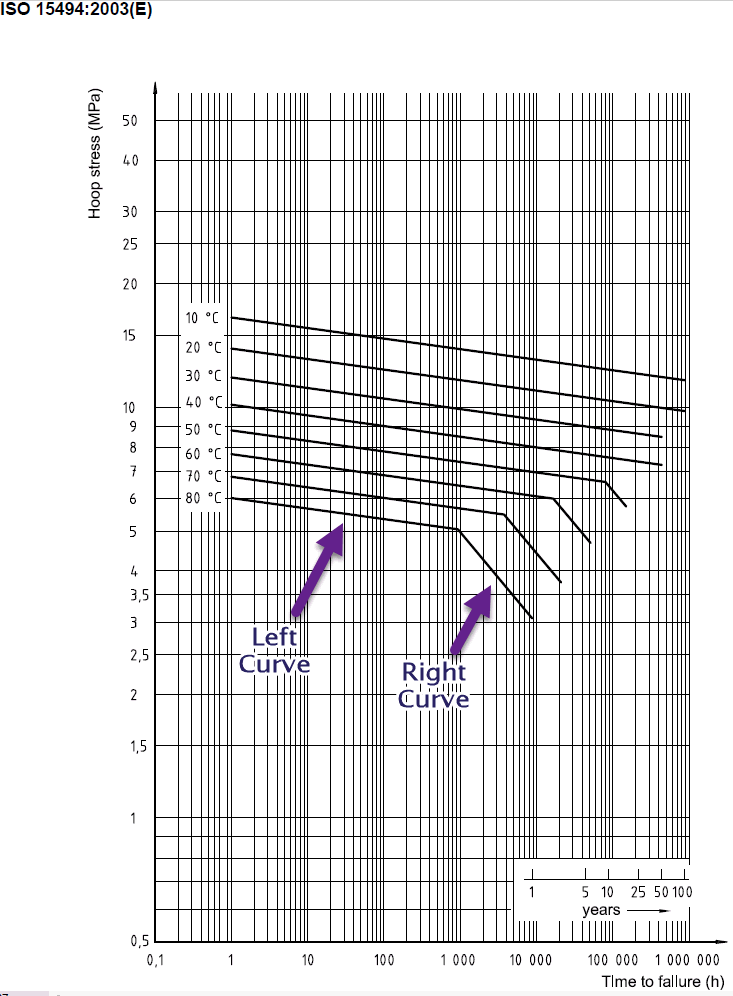
 - service
life from project settings,
- service
life from project settings,
 - operation temperature
from pipe properties,
- operation temperature
from pipe properties,
 - safety factor for operation
temperature from material database. Ki=K20
for ti<=20, Ki=Kope for ti>20
- safety factor for operation
temperature from material database. Ki=K20
for ti<=20, Ki=Kope for ti>20
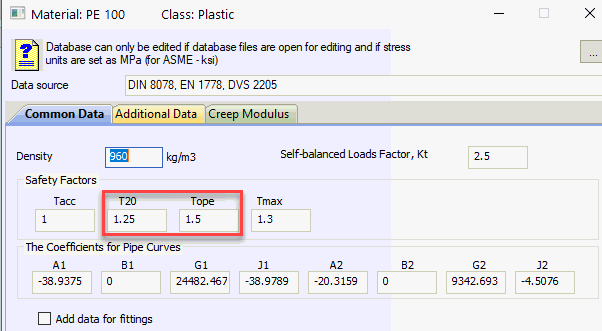

 - service
life from project settings,
- service
life from project settings,
Kt - secondary allowable stress factor from material database. Recommended values PVC, PVC-C: 1.75, PE, PE-RT: 2.5, PVDF: 3.5, PP: 2.5
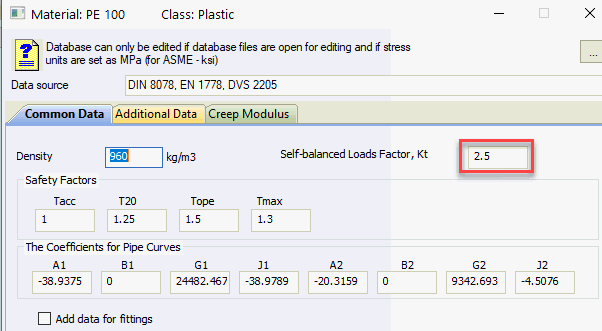
Kcyc - fatigue factor

N - number of cycles per year, taken from Temperature Cycles multiplied by service life from Project Settings
Kcyc can't be greater than 1.0 or less than 0.4
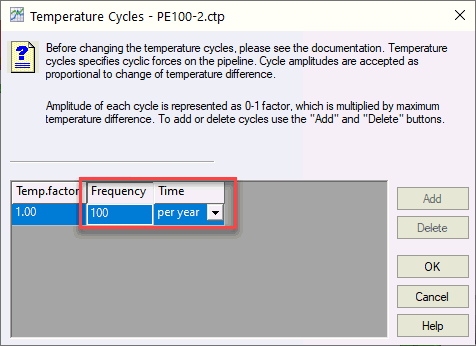
All other factors calculated using the same rules, as for weight (primary) loads

 - service
life from project settings,
- service
life from project settings,
 - Ambient temperature from
Project Settings,
- Ambient temperature from
Project Settings,
All other factors calculated using the same rules, as for operating (primary+secondary) loads

Ky=1, Kx=1, Kp=1, Kt=1, Kcyc=1
 =24 hours,
=24 hours,
 - test temperature from pipe properties,
- test temperature from pipe properties,
 - safety factor for occasional
loads Kacc from material database.
- safety factor for occasional
loads Kacc from material database.

Ky=1, Kx=1, Kp=1, Kt=1, Kcyc=1
 =24 hours,
=24 hours,
 - operation temperature
from project settings,
- operation temperature
from project settings,
 - safety factor for occasional
loads Kacc from material database.
- safety factor for occasional
loads Kacc from material database.
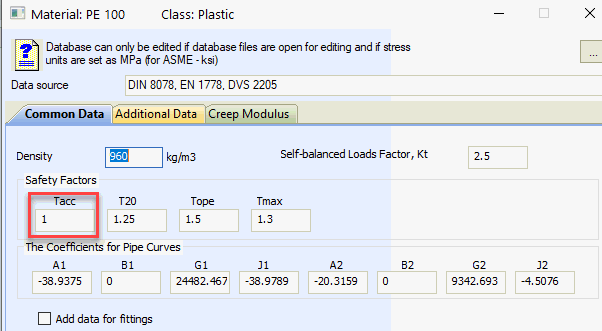
Hoop Stress

Axial Stress

Torsion Stress

Equivalent Stress

p - pressure
D - pipe outer diameter
t - pipe wall thickness
A - pipe cross section area
Z - pipe section modulus
Mt - torsion moment
Mi - in-plane moment
Mo - out-plane moment
 - ring bending stresses,
calculated using built-in nonlinear FEM model
- ring bending stresses,
calculated using built-in nonlinear FEM model
Bends:

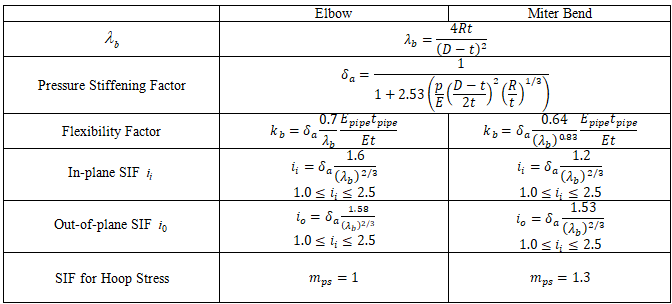
For straight tees:



For reducing tees:

Reducer:



The crack in PVC-C pipe caused by too high torsion moment caused by thermal expansion. The pipe stress analysis using START-PROF software at design stage can help to avoid this situation.
